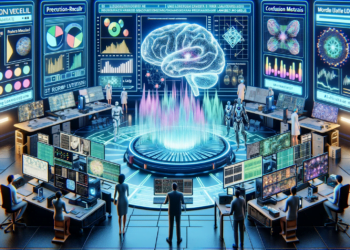The advancement of language models based on artificial intelligence (AI) has been one of the most impactful in the scientific field in recent years. Specifically, multilingual language models have begun to play a crucial role in transcending language barriers, leading to significant progress in the globalization of AI research. This article delves into the evolution, mechanics, and most recent developments in this area of study, comparing them with previous works and envisioning future horizons.
Theoretical Foundations
Multilingual language models are built upon foundational concepts such as Deep Learning, Transfer Learning, and Transformer Architectures. Deep Neural Networks (DNN) enabled the sequential processing of linguistic data, while Transfer Learning allowed the application of knowledge learned from one task to another, and Transformer architectures introduced self-directed attention, enabling a richer contextual understanding.
Algorithmic Advances
The Transformer model, introduced in the paper “Attention is All You Need” by Vaswani et al. in 2017, has been the starting point for subsequent developments. The ability of these models to learn contextual semantic representations has been enhanced with variants such as BERT (Bidirectional Encoder Representations from Transformers) and its multilingual successors, such as mBERT and XLM-R. These models are trained on vast multilingual corpora, enabling cross-linguistic representations that benefit communities with languages under-represented in AI.
Emerging Applications
In practical terms, a revolution is taking place in fields such as machine translation, natural language processing (NLP) applied to low-resource languages, and text generation. The applicability to real-world situations is extensive, from support systems in natural disasters where linguistic knowledge is diverse, to the development of inclusive global interfaces.
Comparative Analysis
Comparing multilingual models with their monolingual counterparts reveals a notable improvement in NLP tasks such as part-of-speech tagging, named entity recognition, and reading comprehension. Studies such as “Cross-lingual Language Model Pretraining” by Conneau et al., demonstrate the effectiveness of XLM-R over unilingual models by expanding the scope of NLP tasks across multiple languages simultaneously.
Case Study: XLM-R and Emergency Assistance
A real-world situation where models like XLM-R are pivotal is in monitoring social networks during emergencies. In multilingual events, such as natural disasters affecting regions with linguistic diversity, XLM-R has been used to classify and filter relevant information, effectively contributing to rescue operations and assistance where language precision is crucial.
Innovations and Future Projections
Looking ahead, one of the challenges is the improvement of linguistic equity. Advances in zero-shot learning and few-shot learning are projected, which will enable models to function in languages for which they have very little data. Additionally, fields such as affective computing could greatly benefit from multilingual models that understand and generate emotional responses in different languages.
Conclusions
Multilingual language models are a crucial step in the evolution of AI and continue to significantly impact research by facilitating a more inclusive and global approach. These models not only amplify accessible knowledge in different languages but also enrich the scientific process by allowing the input from diverse linguistic communities. The potential for future innovations is vast and is only limited by the creativity and resources dedicated to this fascinating intersection between linguistics and artificial intelligence.






















